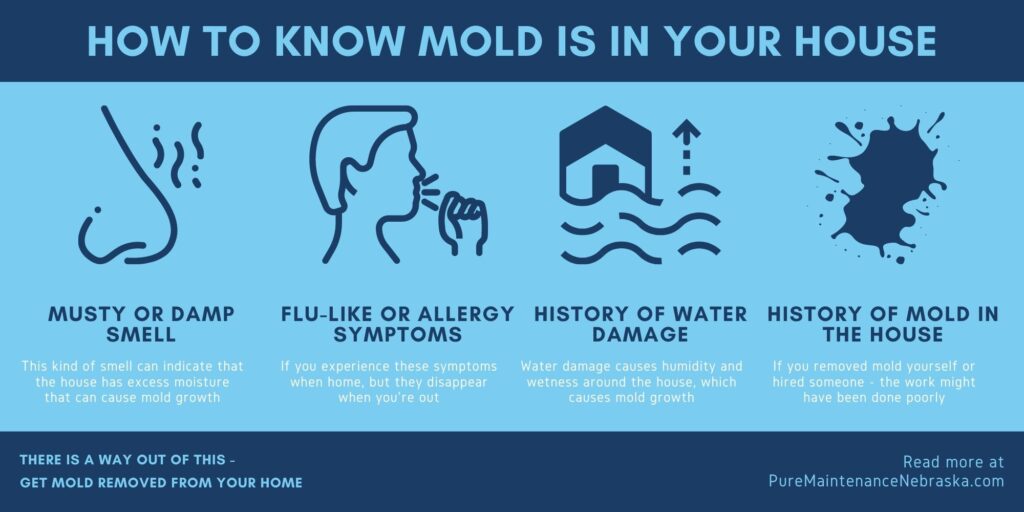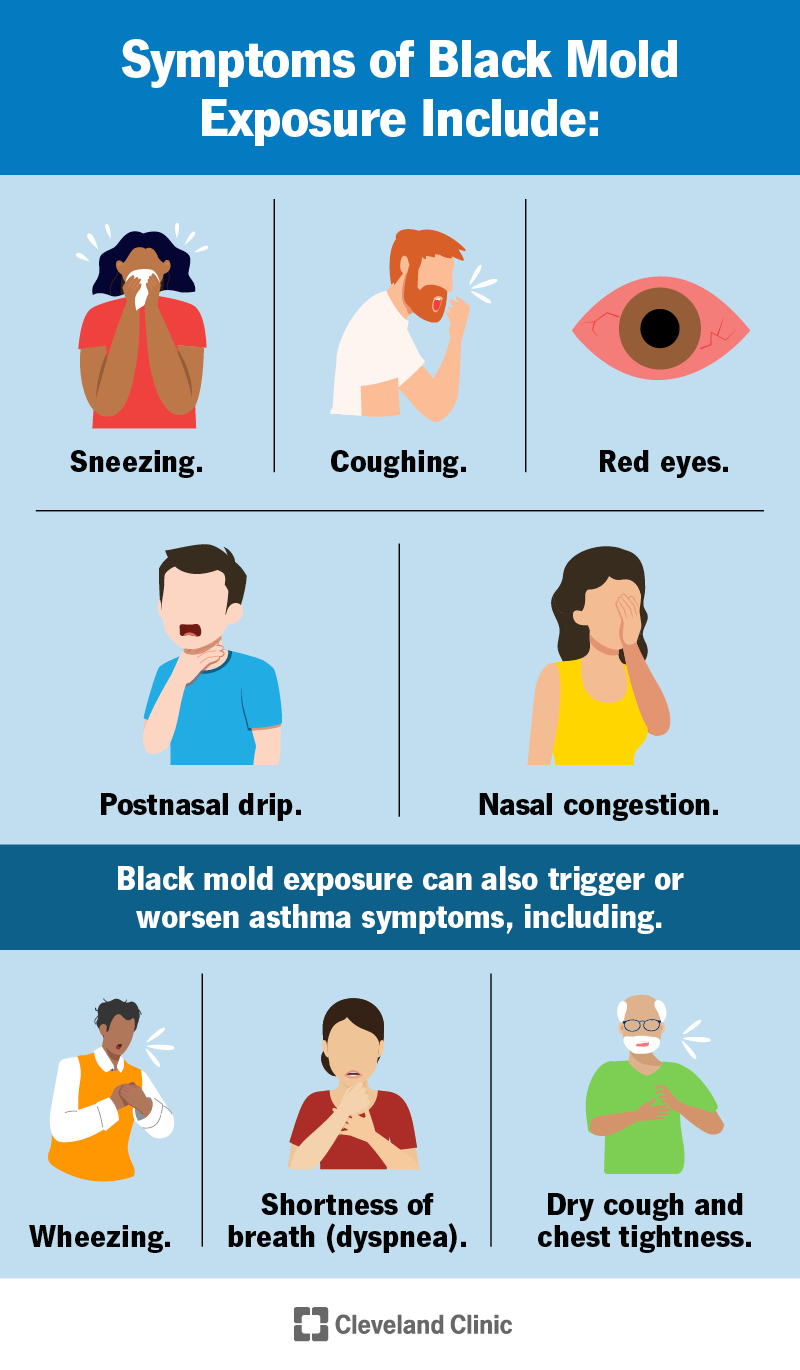Have you ever wondered about the symptoms that come with a high mold count? Mold, a common household issue, can have various health effects on individuals, especially when the mold count is high. From nasal congestion to skin irritation, this article explores the symptoms associated with high mold counts and provides helpful information on how to identify and address them. Whether you’re dealing with a mold problem or simply want to be informed, read on to discover all you need to know about the symptoms of high mold count.

Respiratory symptoms
Coughing
When exposed to a high mold count, one of the primary symptoms you may experience is coughing. Mold spores can irritate the lining of your respiratory system, triggering a persistent cough. This cough may be dry or accompanied by mucus production.
Wheezing
Wheezing is another common respiratory symptom associated with a high mold count. It occurs when your airways become narrowed or constricted, making it difficult to breathe. Wheezing may be accompanied by a whistling or rattling sound when you exhale.
Shortness of breath
High mold counts can also lead to shortness of breath. Mold spores can cause inflammation in your airways, making it challenging to take deep breaths. If you find yourself feeling out of breath even with light physical activity, it may be a sign of mold exposure.
Sneezing
If you’re constantly sneezing without any obvious cause such as a cold or allergies, it could be a result of a high mold count. Mold spores can act as allergens and trigger sneezing as your body attempts to remove the irritants from your nasal passages.
Runny or stuffy nose
A runny or stuffy nose is another common respiratory symptom associated with high mold counts. Mold spores can cause inflammation in your nasal passages, leading to an increase in mucus production. This can result in a constantly runny nose or a feeling of congestion.
Allergic reactions
Itchy, watery eyes
Exposure to high mold counts can often cause itchy and watery eyes. Mold spores can irritate the delicate tissues of your eyes, leading to discomfort and a persistent urge to rub them.
Red or irritated eyes
In addition to itching and watering, your eyes may also become red and irritated due to mold exposure. The inflammation caused by mold spores can make your eyes appear bloodshot and feel sore.
Itchy throat
If you frequently experience an itchy throat without any signs of infection, it might be due to high mold counts. Breathing in mold spores can cause irritation in your throat, leading to persistent itching and discomfort.
Skin rash or hives
Some individuals may develop a skin rash or hives as a result of a high mold count. Mold spores can trigger an allergic reaction, leading to the appearance of itchy, red bumps or patches on your skin.
Headache
Exposure to mold can also result in headaches. The exact mechanism is not fully understood, but it’s believed that the inflammation caused by mold spores can trigger headaches in susceptible individuals.
Nasal symptoms
Sinus congestion
High mold counts can contribute to sinus congestion. Mold spores can irritate the lining of your sinuses, causing them to become swollen and congested. This can lead to a feeling of pressure in your face and difficulty breathing through your nose.
Postnasal drip
Postnasal drip is another nasal symptom associated with high mold counts. Excessive mucus production caused by mold spores can drip down the back of your throat, leading to a persistent cough, sore throat, or a feeling of something stuck in your throat.
Sinus pressure
In addition to congestion, you may experience sinus pressure if you’re exposed to a high mold count. This pressure can cause discomfort and a feeling of heaviness in your face, particularly around your eyes and forehead.
Frequent sinus infections
For individuals prone to sinus infections, exposure to high mold counts can make them more susceptible. The presence of mold spores can weaken your immune system and create an ideal environment for bacteria to thrive, leading to recurrent sinus infections.
Lung-related symptoms
Chest tightness
Feeling a tightness or constriction in your chest can be a symptom of mold exposure. Mold spores can trigger an inflammatory response in your lungs, causing the muscles around your airways to tighten, resulting in chest discomfort.
Difficulty breathing deeply
Exposure to high mold counts may make it challenging to take deep breaths. Mold spores can cause inflammation and swelling in your airways, making it harder for air to flow in and out of your lungs properly.
Asthma exacerbation
If you have asthma, exposure to high mold counts can worsen your symptoms and lead to an asthma attack. Mold spores can act as triggers for asthma, causing your airways to narrow, leading to coughing, wheezing, and shortness of breath.
Respiratory infections
In some cases, exposure to high mold counts can increase your susceptibility to respiratory infections. Mold spores can weaken your immune system and make it easier for bacteria and viruses to infect your respiratory tract.

Exacerbation of existing conditions
Asthma attacks
For individuals with asthma, exposure to high mold counts can result in an exacerbation of their condition. Mold spores act as potent triggers for asthma symptoms, often leading to severe breathing difficulties and the need for immediate medical attention.
Chronic bronchitis flare-ups
If you suffer from chronic bronchitis, exposure to high mold counts can lead to flare-ups of your condition. Mold spores can irritate the lining of your bronchial tubes, leading to increased coughing, mucus production, and difficulty breathing.
Allergic rhinitis flare-ups
Individuals with allergic rhinitis, commonly known as hay fever, may experience more frequent and intense flare-ups when exposed to high mold counts. Mold spores can trigger allergic reactions, causing nasal congestion, sneezing, and itchy eyes.
COPD symptoms worsening
For those with chronic obstructive pulmonary disease (COPD), exposure to high mold counts can worsen their symptoms. Mold spores can irritate and inflame the airways, leading to increased shortness of breath, coughing, and wheezing.
Neurological symptoms
Brain fog
Exposure to a high mold count can sometimes lead to neurological symptoms, such as brain fog. This refers to a feeling of mental confusion, difficulty concentrating, and a general sense of sluggishness in cognitive function.
Memory problems
Some individuals may experience memory problems when exposed to high mold counts. Mold spores can affect brain function and lead to short-term memory loss or difficulty retaining new information.
Difficulty concentrating
Difficulty concentrating is another common neurological symptom associated with mold exposure. Mold spores can disrupt neurotransmitters in the brain, making it challenging to stay focused and attentive.
Dizziness
Feeling dizzy or lightheaded can occur as a result of exposure to high mold counts. Mold spores can have an impact on your vestibular system, which is responsible for maintaining balance, leading to a sensation of unsteadiness.
Fatigue
Experiencing excessive fatigue or exhaustion can be a neurological symptom of mold exposure. Mold spores can disrupt your sleep patterns and cause chronic fatigue, leaving you feeling constantly tired and lacking energy.

Digestive symptoms
Nausea
Exposure to high mold counts can sometimes lead to digestive symptoms, such as nausea. Ingesting mold spores or being around them can trigger a reaction in your digestive system, resulting in feelings of queasiness and the urge to vomit.
Vomiting
In some cases, exposure to high mold counts can cause vomiting. This is a result of your body trying to rid itself of the mold toxins that have been ingested or absorbed.
Diarrhea
Some individuals may experience diarrhea as a digestive symptom of mold exposure. Mold spores can disrupt the balance of bacteria in your gastrointestinal tract, leading to loose stools and an increased frequency of bowel movements.
Abdominal pain
Abdominal pain and cramping can also occur as a result of exposure to high mold counts. The inflammation caused by mold spores can irritate the lining of your intestines, leading to discomfort and pain in your abdomen.
Skin symptoms
Dry, itchy skin
If you notice your skin becoming dry and itchy without any apparent cause, it could be a result of exposure to a high mold count. Mold spores can trigger an allergic reaction on your skin, leading to dryness and persistent itching.
Skin irritation
In addition to itching, your skin may become irritated when exposed to high mold counts. Redness, inflammation, and a general sensitivity in the affected areas can occur as a result of mold spores coming into contact with your skin.
Eczema flare-ups
Individuals with eczema may experience more frequent and severe flare-ups when exposed to high mold counts. Mold spores can act as triggers for eczema symptoms, leading to increased redness, itching, and the development of skin lesions.

General symptoms
Tiredness
Feeling excessively tired or fatigued can be a general symptom of high mold counts. Mold exposure can disrupt your sleep patterns, cause underlying inflammation, and lead to chronic fatigue.
Muscle aches
Experiencing muscle aches is another general symptom associated with exposure to high mold counts. The inflammation caused by mold spores can lead to muscle pain and stiffness, particularly in areas that have been exposed directly to the mold.
Joint pain
Joint pain can occur as a result of exposure to high mold counts. The inflammatory response triggered by mold spores can affect your joints, leading to discomfort and increased sensitivity.
Headaches
Headaches are a common general symptom associated with mold exposure. The exact mechanism behind this symptom is not fully understood, but it is believed that the inflammation caused by mold spores can trigger headaches in susceptible individuals.
Psychological symptoms
Anxiety
Exposure to high mold counts can sometimes have psychological effects, including increased anxiety. The presence of mold in your environment can create a sense of unease and contribute to heightened feelings of worry or nervousness.
Depression
In some cases, exposure to high mold counts can lead to feelings of depression. The impact of mold on your overall well-being, combined with the physical symptoms it may cause, can contribute to a sense of sadness or hopelessness.
Mood swings
Mood swings can occur as a result of exposure to high mold counts. The inflammation and disruption to neurotransmitters caused by mold spores can lead to emotional instability and frequent changes in mood.
Irritability
Feeling irritable or easily agitated can be a psychological symptom of mold exposure. Mold spores can affect brain function and contribute to heightened irritability, making it harder to cope with everyday stressors.
In conclusion, being aware of the symptoms associated with a high mold count is crucial for maintaining your health and well-being. When exposed to mold spores, respiratory symptoms such as coughing, wheezing, shortness of breath, sneezing, and a runny or stuffy nose are common. Allergic reactions can manifest as itchy, watery eyes, red or irritated eyes, itchy throat, skin rash or hives, and headaches. Nasal symptoms may include sinus congestion, postnasal drip, sinus pressure, and frequent sinus infections. Lung-related symptoms can include chest tightness, difficulty breathing deeply, asthma exacerbation, and respiratory infections. Mold exposure can also exacerbate existing conditions like asthma attacks, chronic bronchitis flare-ups, allergic rhinitis flare-ups, and worsening COPD symptoms.
Neurological symptoms such as brain fog, memory problems, difficulty concentrating, dizziness, and fatigue can also occur when exposed to high mold counts. Digestive symptoms like nausea, vomiting, diarrhea, and abdominal pain may manifest. Skin symptoms can include dry, itchy skin, skin irritation, and eczema flare-ups. General symptoms may include tiredness, muscle aches, joint pain, and headaches. Additionally, mold exposure can have psychological symptoms such as anxiety, depression, mood swings, and irritability.
If you suspect you are experiencing symptoms related to a high mold count, it is important to seek medical advice and consider evaluating your environment for potential mold sources. Taking steps to reduce your exposure to mold and addressing any existing conditions can help alleviate symptoms and improve your overall well-being. Remember, you don’t have to navigate this alone – reach out to healthcare professionals who can provide guidance and support in managing mold-related symptoms.
